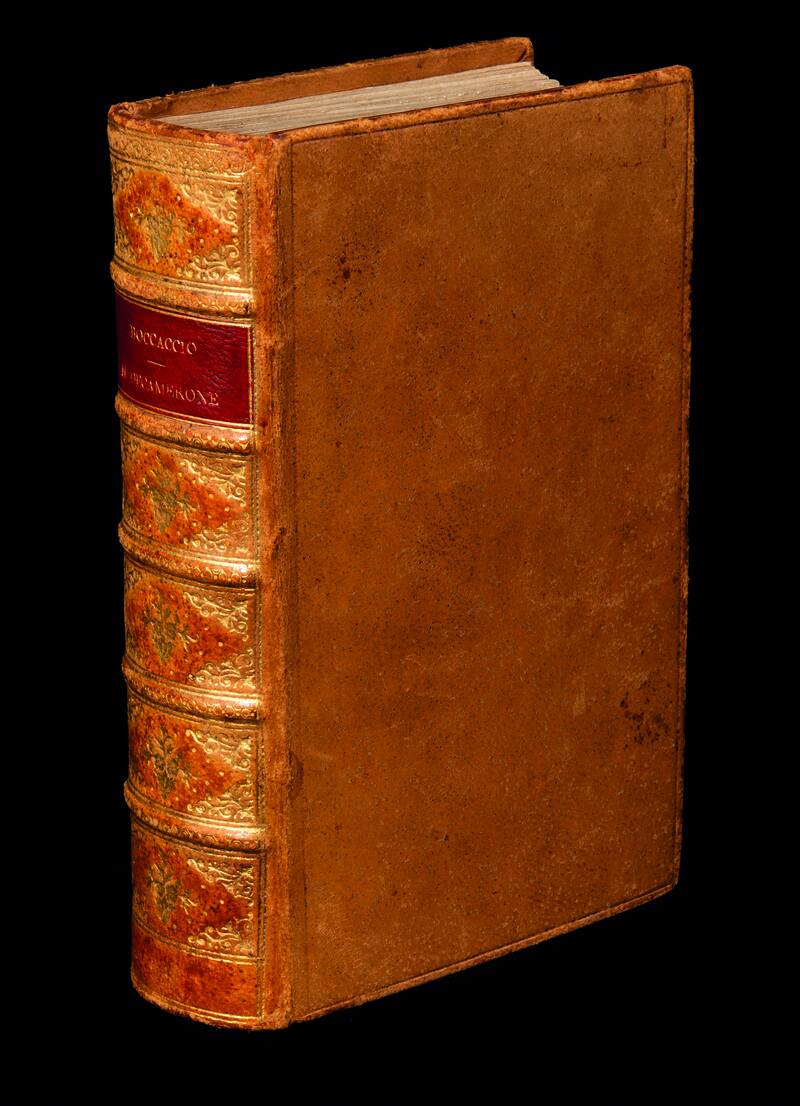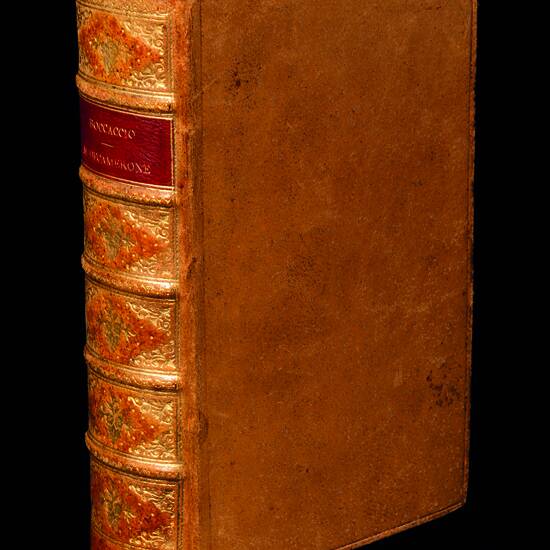BOCCACCIO, Giovanni.. Il Decamerone, nuovamente corretto, historiat & com diligenza stampato.
Venezia: Nicolini da Sabio, 1537, Nicolini da Sabio., 1537Octavo (147 x 93 mm.), 439, [9] leaves with istoriated title page printed in black and red and ten woodcut illustations in the text, one at the beginning of each giornata. Title page lightly soiled, a few spots but a very good copy bound in Xx century calf, spine in compartments withe red morocco lettering piece, richly gilt.
Boccaccio's most well-known work, the Decameron, in a beautiful and rare edition published after the most famous Ventisettana edition, published by the Giunta in 1527. Faithfully following the model of its predecessor, the work has been enriched with the life of Boccaccio by Filippo di Matteo Villani. It is illustrated throughout, with ten woodcut images associated to each day of story-telling.
Beyond a simple collection of 100 hundred short stories, the Decameron portrays Boccaccio's contemporary Florentine society. Often offering a critical scrutiny of the secular man and woman's habits and vices – although most of all the clergy's – its stories are enlaced with wit, eroticism, humour, tragedy, adventure and love. The framing narrative places the brigata of three young men and seven young women in a countryside villa in an attempt to escape the plague that has come down in Florence. In order to amuse themselves, each person tells a story in each of their ten day stay.
Largely influenced by Boccaccio's own experiences of the Black Death's deadly outbreak of 1348 in Florence, it is known that work started on the Decameron a year after this pandemic. “Although it is by no means the only remaining description of the Black Plague of 1348, Boccaccio's account in the Decameron is probably the most well-known portrayal among medieval historians and literary critics. (…) The arrival of the catastrophic and enigmatic Plague forever changed the way in which fourteenth-century man understood his relationship to the world around him. There were those who saw the vast human destruction as a sort of Old Testament-like form of divine punishment and others who attributed it to the tyranny of chance. Boccaccio's emphasis on a naturalistic portrayal of the plague's effects in Florence, thought by some to have been inspired by analogous accounts in Lucretius' De rerum natura, dismantled Bernard Silvester's notion of Nature as Mater generationis and sets the stage for an interpretation of health and stability as mere illusions. This perspective allows for the literary development of unaccustomed concepts regarding the relationship of man to his environment (as well as to his fellow man) and casts new light on the ramifications of the brigata's attempts at diversion - attempts to create in an uncertain and malevolent world their own utopia.” (Decameron Web Project, accessed on February 2023)
USTC 814808; Graesse I, 450; Edit16: CNCE 6292; Brunet I, 1000; BMSTC Italian 110; Adams, B-2148.

